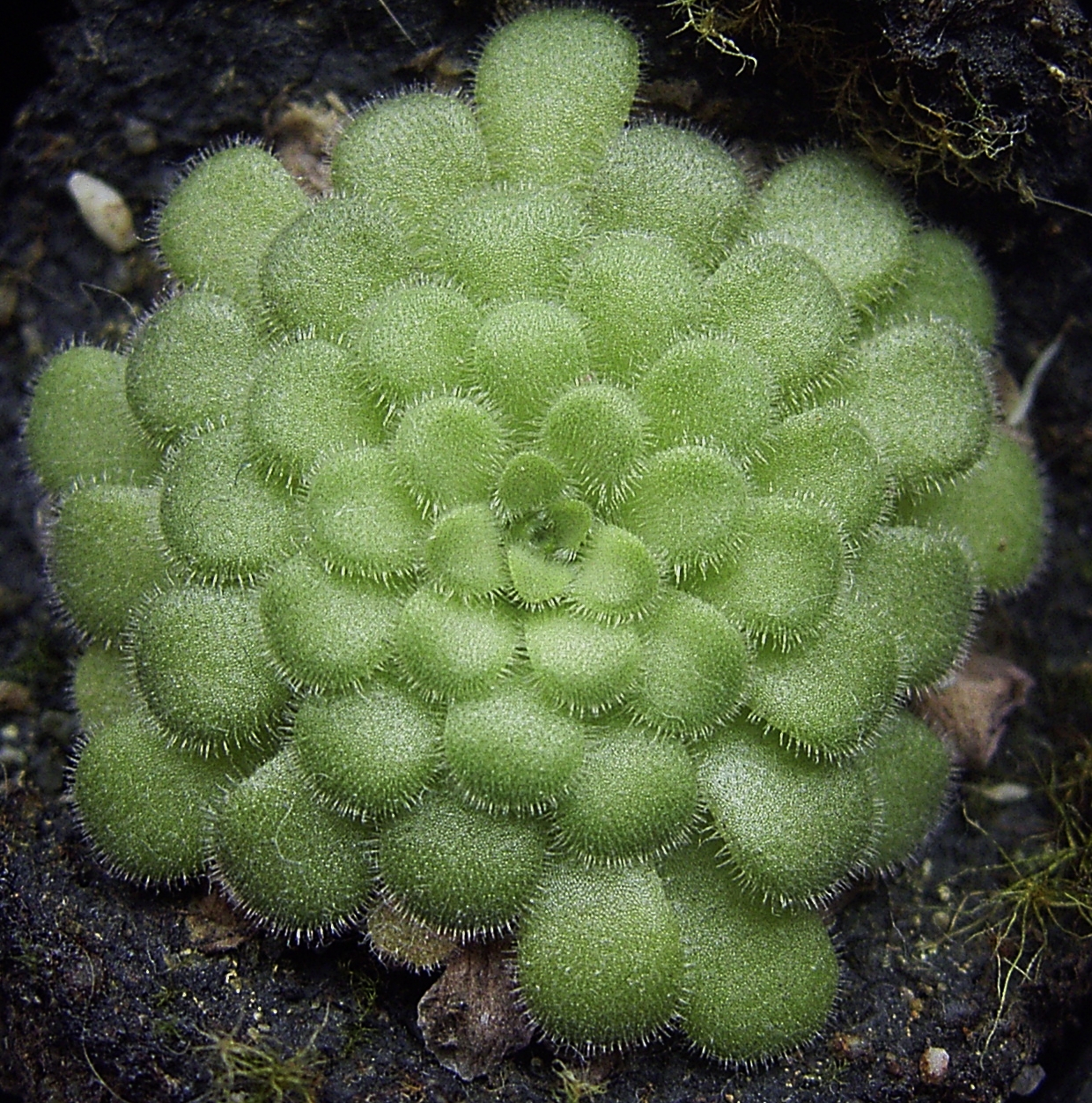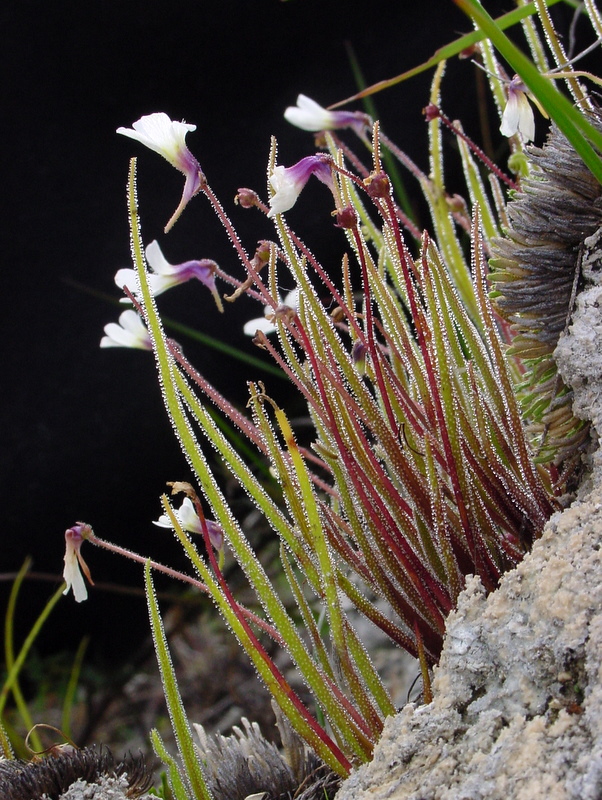|
Pinguicula Laxifolia
''Pinguicula laxifolia'' is an insectivorous plant of the genus ''Pinguicula'' native to the Mexican state of Tamaulipas, the only member of the section '' Orchidioides''. Its pendulous leaves are unusual in the genus, which features mostly species with stiff or succulent leaves. Morphology ''Pinguicula laxifolia'' is a perennial rosetted herb bearing pendulous to semi-erect elliptic or oblanceolate long leaves."Luhrs, H.; ''New additions to the genus Pinguicula (Lentibulariaceae) of Mexico'' Phytologia, 1995, vol. 79 (2), pages 114 - 122 ( vailable in http://epbb.club.fr/Publications/P_stolonifera_P_laxifolia.pdf pdf These are densely covered with stalked mucilaginous and sessile digestive glands, which serve to trap and digest insect prey and absorb the resulting nutrient mixture to supplement their nitrate-low environment. ''P. laxifolia'' forms Winter rosettes of succulent, non-carnivorous leaves to conserve energy through the cool, dry seasons, and as a means of self-pro ... [...More Info...] [...Related Items...] OR: [Wikipedia] [Google] [Baidu] |
Carnivorous Plant
Carnivorous plants are plants that derive some or most of their nutrients from trapping and consuming animals or protozoans Protozoa (singular: protozoan or protozoon; alternative plural: protozoans) are a group of single-celled eukaryotes, either free-living or parasitic, that feed on organic matter such as other microorganisms or organic tissues and debris. Histo ..., typically insects and other arthropods. Carnivorous plants still generate some of their energy from photosynthesis. Carnivorous plants have adapted to grow in places where the soil is thin or poor in soil nutrient, nutrients, especially nitrogen, such as acidic bogs. They can be found on all continents except Antarctica, as well as many Pacific islands. In 1875 Charles Darwin published ''Insectivorous Plants (book), Insectivorous Plants'', the first treatise to recognize the significance of carnivory in plants, describing years of painstaking research. True carnivory is believed to have convergent evoluti ... [...More Info...] [...Related Items...] OR: [Wikipedia] [Google] [Baidu] |
Genus
Genus ( plural genera ) is a taxonomic rank used in the biological classification of extant taxon, living and fossil organisms as well as Virus classification#ICTV classification, viruses. In the hierarchy of biological classification, genus comes above species and below family (taxonomy), family. In binomial nomenclature, the genus name forms the first part of the binomial species name for each species within the genus. :E.g. ''Panthera leo'' (lion) and ''Panthera onca'' (jaguar) are two species within the genus ''Panthera''. ''Panthera'' is a genus within the family Felidae. The composition of a genus is determined by taxonomy (biology), taxonomists. The standards for genus classification are not strictly codified, so different authorities often produce different classifications for genera. There are some general practices used, however, including the idea that a newly defined genus should fulfill these three criteria to be descriptively useful: # monophyly – all descendants ... [...More Info...] [...Related Items...] OR: [Wikipedia] [Google] [Baidu] |
Pinguicula
''Pinguicula'', commonly known as the butterworts, is a genus of carnivorous flowering plants in the family Lentibulariaceae. They use sticky, glandular leaves to lure, trap, and digest insects in order to supplement the poor mineral nutrition they obtain from the environment. Of the roughly 80 currently known species, 13 are native to Europe, 9 to North America, and some to northern Asia. The largest number of species is in South and Central America. Etymology The name ''Pinguicula'' is derived from a term coined by Conrad Gesner, who in his 1561 work entitled ''Horti Germaniae'' commented on the glistening leaves: ''"propter pinguia et tenera folia…"'' (Latin ''pinguis'', "fat"). The common name "butterwort" reflects this characteristic. Characteristics The majority of ''Pinguicula'' are perennial plants. The only known annuals are ''P. sharpii'', ''P. takakii'', ''P. crenatiloba'', and ''P. pumila''. All species form stemless rosettes. Habitat Butterworts can be ... [...More Info...] [...Related Items...] OR: [Wikipedia] [Google] [Baidu] |
Mexico
Mexico (Spanish: México), officially the United Mexican States, is a country in the southern portion of North America. It is bordered to the north by the United States; to the south and west by the Pacific Ocean; to the southeast by Guatemala, Belize, and the Caribbean Sea; and to the east by the Gulf of Mexico. Mexico covers ,Mexico ''''. . making it the world's 13th-largest country by are ... [...More Info...] [...Related Items...] OR: [Wikipedia] [Google] [Baidu] |
Tamaulipas
Tamaulipas (), officially the Free and Sovereign State of Tamaulipas ( es, Estado Libre y Soberano de Tamaulipas), is a state in the northeast region of Mexico; one of the 31 states which, along with Mexico City, comprise the 32 Federal Entities of Mexico. It is divided into 43 municipalities. Tamaulipas is bordered by the states of Nuevo León to the west, San Luis Potosí to the southwest, and Veracruz to the southeast. To the north, it has a stretch of the U.S.–Mexico border with the state of Texas, and to the east it is bordered by the Gulf of Mexico. In addition to the capital city, Ciudad Victoria, the state's largest cities include Reynosa, Matamoros, Nuevo Laredo, Tampico, and Mante. Etymology The name Tamaulipas is derived from ''Tamaholipa'', a Huastec term in which the ''tam-'' prefix signifies "place (where)". No scholarly agreement exists on the meaning of ''holipa'', but "high hills" is a common interpretation. Another explanation of the state name is tha ... [...More Info...] [...Related Items...] OR: [Wikipedia] [Google] [Baidu] |
Section (botany)
In botany, a section ( la, sectio) is a taxonomic rank below the genus, but above the species. The subgenus, if present, is higher than the section, and the rank of series, if present, is below the section. Sections may in turn be divided into subsections.Article 4 in Sections are typically used to help organise very large genera, which may have hundreds of species. A botanist wanting to distinguish groups of species may prefer to create a taxon at the rank of section or series to avoid making new combinations, i.e. many new binomial names for the species involved. Examples: * ''Lilium'' sectio ''Martagon'' Rchb. are the Turks' cap lilies * ''Plagiochila aerea'' Taylor is the type species of ''Plagiochila'' sect. ''Bursatae'' See also * Section (biology) References Section Section, Sectioning or Sectioned may refer to: Arts, entertainment and media * Section (music), a complete, but not independent, musical idea * Section (typography), a subdivision, especially ... [...More Info...] [...Related Items...] OR: [Wikipedia] [Google] [Baidu] |
List Of Pinguicula Species
:''This article is a list of the butterworts, the species of the genus Pinguicula. For general information on butterworts, please see the main article on Pinguicula.'' The genus ''Pinguicula'' contains the 83 species of butterworts, belonging to the bladderwort family (Lentibulariaceae). It has a natural distribution across most of the Northern Hemisphere, though over half of the species are concentrated in Mexico and Central America. Siegfried Jost Casper systematically divided them into three subgenera with 15 sections. Subsequent phylogenetic research showed that many of these groupings are polyphyletic, but they are used below. Subgenus ''Isoloba'' Section ''Agnata'' *'' Pinguicula agnata'' *'' Pinguicula albida'' *'' Pinguicula benedicta'' *'' Pinguicula cubensis'' *'' Pinguicula filifolia'' *''Pinguicula gigantea'' *'' Pinguicula infundibuliformis'' *''Pinguicula lithophytica'' *''Pinguicula pilosa'' Section ''Cardiophyllum'' *''Pinguicula crystallina'' ** ... [...More Info...] [...Related Items...] OR: [Wikipedia] [Google] [Baidu] |
Rosette (botany)
In botany, a rosette is a circular arrangement of leaves or of structures resembling leaves. In flowering plants, rosettes usually sit near the soil. Their structure is an example of a modified stem in which the internode gaps between the leaves do not expand, so that all the leaves remain clustered tightly together and at a similar height. Some insects induce the development of galls that are leafy rosettes. In bryophytes and algae, a rosette results from the repeated branching of the thallus as the plant grows, resulting in a circular outline. Taxonomies Many plant families have varieties with rosette morphology; they are particularly common in Asteraceae (such as dandelions), Brassicaceae (such as cabbage), and Bromeliaceae. The fern '' Blechnum fluviatile'' or New Zealand Water Fern (''kiwikiwi'') is a rosette plant. Function in flowering plants Often, rosettes form in perennial plants whose upper foliage dies back with the remaining vegetation protecting the plant. Ano ... [...More Info...] [...Related Items...] OR: [Wikipedia] [Google] [Baidu] |
Herbaceous
Herbaceous plants are vascular plants that have no persistent woody stems above ground. This broad category of plants includes many perennials, and nearly all annuals and biennials. Definitions of "herb" and "herbaceous" The fourth edition of the ''Shorter Oxford English Dictionary'' defines "herb" as: #"A plant whose stem does not become woody and persistent (as in a tree or shrub) but remains soft and succulent, and dies (completely or down to the root) after flowering"; #"A (freq. aromatic) plant used for flavouring or scent, in medicine, etc.". (See: Herb) The same dictionary defines "herbaceous" as: #"Of the nature of a herb; esp. not forming a woody stem but dying down to the root each year"; #"BOTANY Resembling a leaf in colour or texture. Opp. scarious". Botanical sources differ from each other on the definition of "herb". For instance, the Hunt Institute for Botanical Documentation includes the condition "when persisting over more than one growing season, the parts of ... [...More Info...] [...Related Items...] OR: [Wikipedia] [Google] [Baidu] |
Insect
Insects (from Latin ') are pancrustacean hexapod invertebrates of the class Insecta. They are the largest group within the arthropod phylum. Insects have a chitinous exoskeleton, a three-part body ( head, thorax and abdomen), three pairs of jointed legs, compound eyes and one pair of antennae. Their blood is not totally contained in vessels; some circulates in an open cavity known as the haemocoel. Insects are the most diverse group of animals; they include more than a million described species and represent more than half of all known living organisms. The total number of extant species is estimated at between six and ten million; In: potentially over 90% of the animal life forms on Earth are insects. Insects may be found in nearly all environments, although only a small number of species reside in the oceans, which are dominated by another arthropod group, crustaceans, which recent research has indicated insects are nested within. Nearly all insects hatch from eggs. ... [...More Info...] [...Related Items...] OR: [Wikipedia] [Google] [Baidu] |
Carnivorous Plants Of North America
The North American continent is home to a wide variety of carnivorous plant species. Species from seven genera are native to the continent, and three of these genera are found nowhere else on the planet. Genera and species ;''Catopsis'' *''Catopsis berteroniana'' ;''Darlingtonia'' *'' Darlingtonia californica'' ;''Dionea'' *'' Dionea muscipula'' ;''Drosera'' *''Drosera anglica'' *''Drosera brevifolia'' *''Drosera capillaris'' *''Drosera filiformis'' *''Drosera intermedia'' *''Drosera linearis'' *''Drosera rotundifolia'' *''Drosera tracyi'' ;''Sarracenia'' *''Sarracenia alabamensis'' *''Sarracenia alata'' *''Sarracenia flava'' *''Sarracenia jonesii'' *''Sarracenia leucophylla'' *''Sarracenia minor'' *''Sarracenia oreophila'' *''Sarracenia psittacina'' *''Sarracenia purpurea'' *''Sarracenia rosea'' *''Sarracenia rubra'' ;''Pinguicula'' *''Pinguicula acuminata'' *''Pinguicula conzattii'' *'' Pinguicula elizabethiae'' *'' Pinguicula filifolia'' *''Pinguicula gigantea'' *''Pi ... [...More Info...] [...Related Items...] OR: [Wikipedia] [Google] [Baidu] |
Endemic Flora Of Mexico
Endemism is the state of a species being found in a single defined geographic location, such as an island, state, nation, country or other defined zone; organisms that are indigenous to a place are not endemic to it if they are also found elsewhere. For example, the Cape sugarbird is found exclusively in southwestern South Africa and is therefore said to be ''endemic'' to that particular part of the world. An endemic species can be also be referred to as an ''endemism'' or in scientific literature as an ''endemite''. For example '' Cytisus aeolicus'' is an endemite of the Italian flora. '' Adzharia renschi'' was once believed to be an endemite of the Caucasus, but it was later discovered to be a non-indigenous species from South America belonging to a different genus. The extreme opposite of an endemic species is one with a cosmopolitan distribution, having a global or widespread range. A rare alternative term for a species that is endemic is "precinctive", which applies to ... [...More Info...] [...Related Items...] OR: [Wikipedia] [Google] [Baidu] |







.jpg)